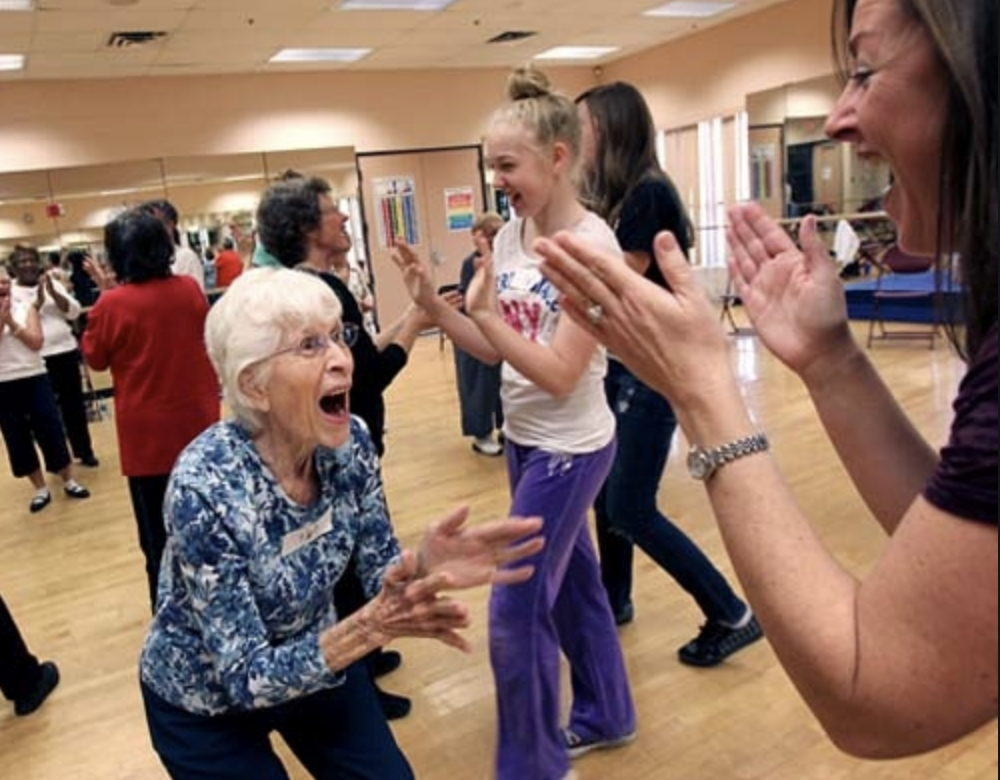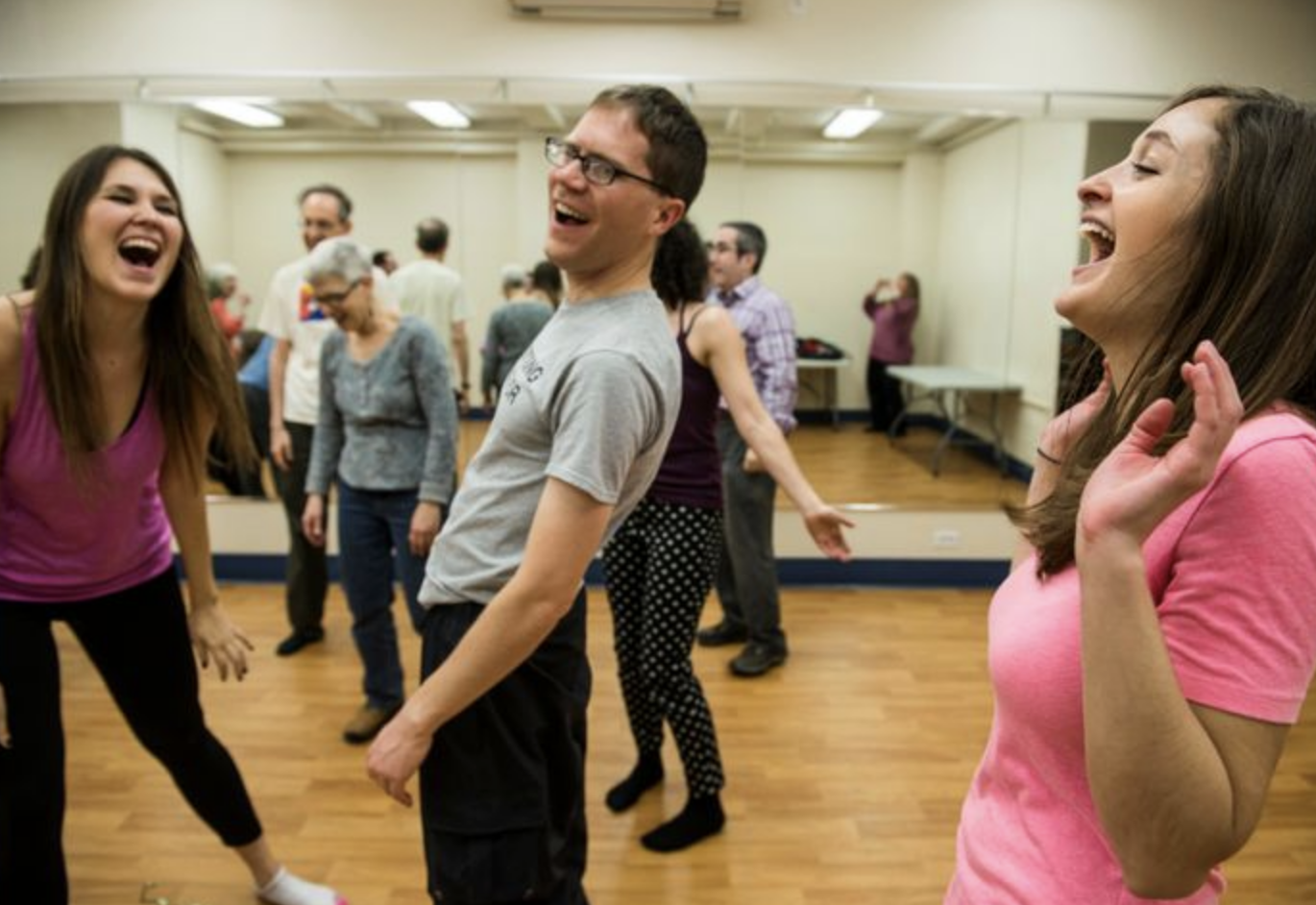Laughter is the Best Medicine
In today’s world describing life as stressful is an understatement. Stress compromises the quality of life, causing a negative influence on a person’s mental and physical health. Laughter is a positive sensation, and seems to be a useful and healthy way to overcome stress. I will be taking you on a tour of the history and relationship between humor, laughing, learning, and health, with an emphasis on the powerful, universal language of laughter.
Laughing increases the pain threshold.
In 1964, Norman Cousins was diagnosed with a degenerative disease that caused him constant pain and suffering in his back and jaw. He was also given the prognosis of only a few months to live.
“10 minutes of laughter gave me 2 hours of pain free sleep”
-Norman Cousins
Cousins served as an Adjunct Professor at University of California–Los Angeles, where he conducted research on human emotions, which he believed were critical to fighting illness. He often expressed his belief that, since negative emotions lead to negative effects on physically, then positive emotion, such as humor, can lead to positive physically. Chronic stress has been shown to elevate the levels of stress hormones, epinephrine and cortisol. Chronic stress also increases the likelihood of blood clots. Together, these physical responses to stress increase the risk for cardiovascular and other diseases. The positive emotions of humor and laughter decrease the risk for stress-related diseases.
Cousins decided to take his treatment into his own hands. He watched humorous movies and television shows to induce laughter as a consistent part of his treatment. Mirthful laughter reduced his pain and relieved stress. Cousins said, “laughter produced a natural body anesthesia.” Cousins’ humor-induced treatment saved his life and allowed him to live and prosper for nearly 25 additional years. Cousins and his remarkable results are a testament to the positive psychophysiological impact created by the emotions of humor and mirthful laughter and have been documented in a book he authored, Anatomy of an Illness as Perceived by the Patient.
Laughter in other animals
Research has given credence to the idea that laughter evolved in a common ancestor of the great apes and humans. Chimpanzees, apes, rats, dolphins and dogs all laugh as part of socialization in the form of play. Play forms social bonds and laughter is the sound of this is play. I’m not attacking you
Chimpanzees, Apes, Orangutans and Bonobos all laugh when tickled and when they engage in play. They all share with humans similar ticklish areas of the body such as the armpits and belly.
Patricia Simonet isolated a sound that dogs make exclusively during play, which she documented as a "forced, breathy exhalation." Using spectrograph analysis, she compared this sound to others that dogs produce during play: growling, whining, panting and barking. When analyzed on a spectrograph – a device which measures sound waves – the laugh-like sound spiked, while the panting sound – a canine sound most similar to it – remained flat.
Humor in teaching.
In addition to the therapeutic benefits, scientists have investigated the impact of humor on teaching and learning. The results from many scientific studies over the past half-century by researchers such as Professors Robert R. Provine, Lee S. Berk , Ronald A. Berk , Sophie Scott, document that humor and laughter promote learning.
Humor and laughter may not directly cause learning; but, humor creates an environment that increases the ability to learn. Teachers who use humor see and increase in performance and decrease in anxiety.Appropriate humor, and humor that relates to course material, holds the attention and produces a more relaxed and productive learning environment. Humor also reduces anxiety, enhances participation, and increases motivation.
Humor has positive physical effects, like decreasing stress hormones like epinephrine and cortisol and increasing the activation of the dopamine system. Also, teaching is about relationships, and humor builds bonds, by strengthening the relationship between student and teacher. This effect may increase interactions with students and teachers, or with students and peers, and humor can help draw out more introverted students.
History of humor in medicine.
Humor, laughter, learning, and health have a long and successful history that has continued for centuries and played an important role in humanity since the beginning of recorded time. The benefits of humor and laughter are even referenced in the bible, Book of Proverbs 17:22 (NIV), where it states: “A cheerful heart is good medicine, but a crushed spirit dries up the bones,” so even in the 10th century, people knew that a joyful spirit has positive health effects, while the absence of joy may make you sick.
Ancient Greek physicians prescribed visiting the hall of comedians as an important part of the healing process. Early Native Americans utilized the powerful impact of humor and laughter in healing as traditional medicine men incorporated the services of clowns to inspire laughter.
During the 14th century, French surgeon Henri de Mondeville used humor to distract patients from the pain during surgery and as a therapy to help recovery. Mondeville supported this practice in a book he authored, Cyrurgia, stating, “Let the surgeon take care to regulate the whole regimen of the patient's life for joy and happiness allowing his relatives and special friends to cheer him and by having someone tell him jokes.” The English scholar Robert Burton expanded on this practice by using humor to treat psychiatric disorders in the 16th century, which was discussed in his book, The Anatomy of Melancholy. Martin Luther, a German priest, used humor to treat psychiatric disorders as a part of counselling. Luther advised patients with depression not to isolate themselves, but to surround themselves with friends who could joke and make them laugh.
These examples show the long history of the use of humor in medicine. But, even though humor was being used and accepted for centuries, there was very little evidence to support humor’s impact. This limited its use by caregivers. This all changed in the 20th century when investigators examined the psychophysiological mechanisms of humor.
William F. Fry, a professor of Psychology at Stanford University, researched laughter and healing as a field of study and created the term gelotology, the study of laughter. Fry was one of the first to apply for public funding for humor research. He published several studies on the physical processes that happen during laughter, including “The respiratory components of mirthful laughter” and “The biology of humor”. Fry found that after 3 minutes of continuous laughter an increase in ventilation and muscle activity. Fry’s work provided evidence and for the positive impact of humor, which paved the path for future research.
Fry says that laughing 100 times a day is equivalent to about 10 minutes of rowing.
Fry says laughter stimulates the production of the alertness hormones catecholamines. Catecholamines also enhance blood flow and thus may speed healing, reduce inflammation and stimulate alertness. These hormones in turn cause the release of endorphins in the brain. Endorphins foster a sense of relaxation and well-being and dull the perception of pain.
It is now well documented and generally accepted that human emotions interact with the mind and body in complicated and powerful ways that impact our health. Just consider the placebo effect that is effective due to the patient's belief in the treatment. Believing in something and laughing both establish a positive impact, and it is this positive feeling that may improve health. Basic human emotions, such as anxiety, depression, fear, joy, and laughter, intensely impact health. Many of us realize, from our personal experiences, that emotions can alter our heart rate, blood pressure, sweating, sleep patterns, and digestion.
Most obvious, however, are laughter's effects on cardiovascular and respiratory functions. When one is laughing hard, normal breathing rhythm is disrupted. Inhalation and expiration become more spasmodic as well as deeper. Heart rate, blood pressure and muscular tension increase, but when laughter subsides, these levels often drop temporarily to below normal, leaving one very relaxed. Hence the expression ''weak with laughter'' to describe someone who has just laughed hard and long.
Lee S. Berk studied the influence of humor on the hypothalamus-pituitary-adrenal axis and the sympathetic nervous system. Berk examined the impact of laughter-induced emotion on cortisol levels. Humor reduced cortisol and increased the production of antibodies and endorphins, the body’s natural pain killers. Berk’s research provided important insights for the benefits of humor for positive psychophysiological responses.
Robert R. Provine, a neuroscientist and professor of psychology at the University of Maryland, Baltimore County, had an important role in the study of laughter, learning, and behavior. Provine’s research has been influential and has further legitimized laughter research as an important field of study.
Hunter (Patch) Adams also committed his life to understanding the benefits of humor and laughter in medicine. Starting in the early 1970s, while attending medical school, Adams introduced fun and laughter into the hospital setting and put into practice the idea that “healing should be a loving human interchange, not a business transaction”. The not-for-profit Big Apple Circus started performing in hospitals with professional clowns in attempts to cheer up patients and make the environment more fun. In 1986 they developed, and made public, a training program for hospital clowns. Their message and techniques spread worldwide and was immortalized in the Hollywood feature film on Patch Adams starring Robin Williams. This movie’s promotion of therapeutic hospital clowns resulted in an extraordinary level of exposure and public recognition.
How Does Laughter Relieve Stress, Anxiety, etc?
Our stomachs are a huge storage place for everything we suppress. Whenever we hold back: anger, sadness, being vulnerable, speaking our truth, love, even holding back laughter. Depression and anxiety are stored in stomach area. The expressions “Gut wrenching” “Stomach tied up in knots” “Butterflies in Stomach” illustrate how much we attach emotions to the stomach area. Keeping you STUCK.
Emotional eating is another way of burying or keeping the lid on authentic thoughts or feelings
When we experience hearty belly laughs, we release all of that pent up tension within the stomach. Laughter shakes everything up and dislodges all of those depressed emotions. Laughing is a way of cleansing the storehouse of the stomach and to free you from what is stuck.
How to create the benefits of laughter when the last thing you feel like doing is laughing?
If you feel all of this is useless because you cannot laugh when you are sad, angry or depressed, don’t be so fast to come to that conclusion. There are many ways to stop your needle from skipping and dance to the music.
Laughter Therapy
A study conducted in 2015 with a group of 32 nursing home residents from one nursing home, while the control group consisted of 33 nursing home residents from another nursing home in the capital city of Turkey. Laughter therapy was applied with nursing home residents of the experimental group two days per week (21 sessions in total). A socio-demographic form and the Short-Form Health Survey were used for data collection.
After the laughter therapy , bodily pain, general health, vitality, social functioning, role-emotional and spiritual health) quality-of-life scores of residents in the experimental group significantly increased in comparison with the pretest.
Laughter therapy improved the quality of life of nursing home residents. Therefore, nursing home management should integrate laughter therapy into health care and laughter therapy should be provided as a routine nursing intervention.
The medical community has taken notice and attempted to include laughter therapy to more traditional therapies. Decreasing stress-making hormones found in the blood, laughter can mitigate the effects of stress. Laughter decreases serum levels of cortisol, epinephrine, growth hormone, indicating a reversal of the stress response. Laughter therapy is a noninvasive and non-pharmacological alternative treatment for stress and depression, representative cases that have a negative influence on mental health.
Laughter Yoga
In the early 1990s, Dr. Madan Kataria of Mumbai became interested in the growing evidence showing that laughter is extremely beneficial to mental and physical health. He decided that more laughter was needed to improve health and cope with the stress of modern living and started a quest to find ways that laughter could be prescribed to patients and people who needed it.





Dr. Kataria and his wife Madhuri, Co-Founder of Laughter Yoga, saw the similarities between Laughter and Pranayama exercises, and incorporated elements from this ancient form of Yoga into Laughter Yoga, including the deep breathing exercises now used between laughter exercises, to deepen the impact.Laughter Yoga has nothing to do with being funny or yoga. The way it works is you “Fake it till you make it”. Your body cannot differentiate between real and forced laughter as far as the positive psychophysiological effects.
In a Japanese study published in 2018, participants took part in a 45 min laughter yoga session once per month for 6 months. Before and after all sessions, participants completed the Profile of Mood questionnaire to assess their mood, and had blood drawn for the measurement of stress indicators and immune function. The results showed that repeated sessions of laughter yoga had psychologically beneficial effects, especially on the aspects of tension-anxiety, and vigor. The hormone and cortisol values related to the participants' stress levels were significantly decreased after the fourth laughter yoga session. These results indicated that multiple laughter yoga sessions appeared to be effective in improving the psychological and physiological status of healthy adults.
Lastly, the take on coping with disease really tugged at my heart-strings. It also really drives home the connection between mirth and health.
Photographer Bob Carey took his first self-portrait dressed like a ballerina, and hilarity ensued. Since then, he has snapped more than 100 tulle-clad silly shots, from amusement parks to beaches, Times Square to Michigan.




Though the images are whimsical, the story behind them is somber: Carey’s wife Linda was diagnosed with cancer in 2003. She beat it, only to have the cancer recur in 2006; and she has been undergoing chemo ever since. The illness taught Carey that though life can be hard, sometimes the best thing to do is laugh.
Today, Carey dons his frills to fight breast cancer, one pirouette at a time. He’ll be self-publishing “Ballerina,” a book of his portraits and humorous stories, this fall, and hopes to raise money to benefit breast cancer organizations. Read more at thetutuproject.com.
















